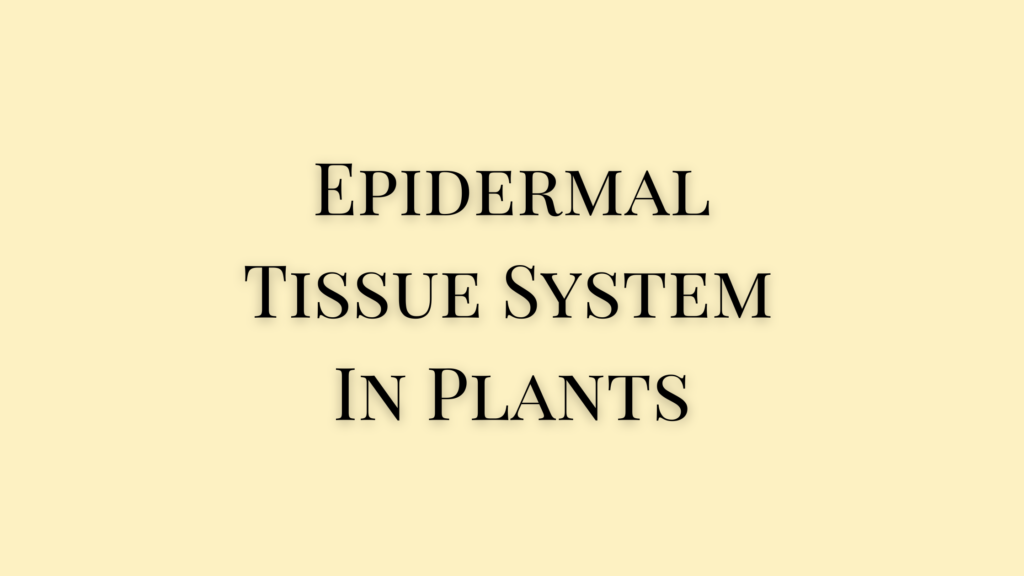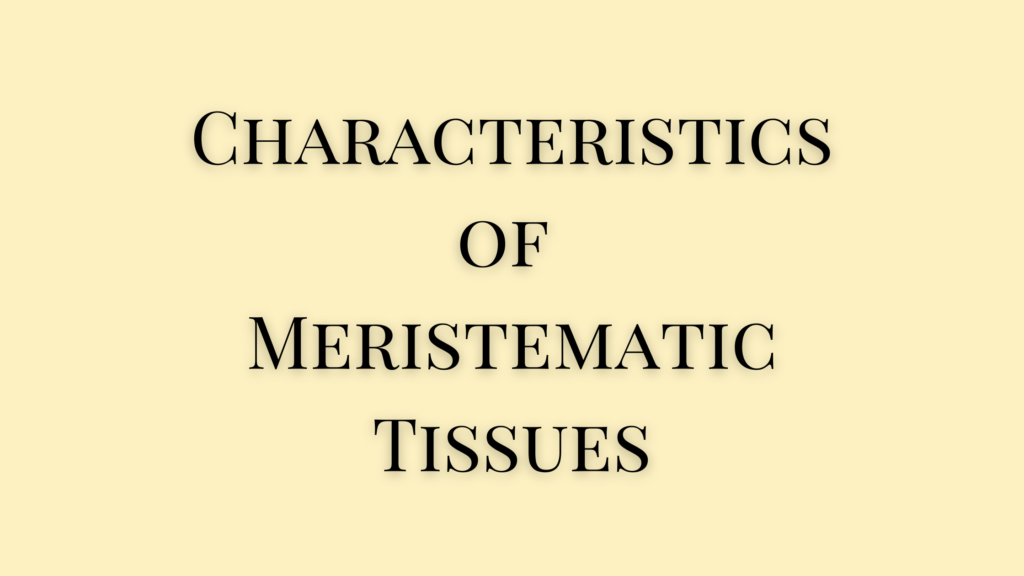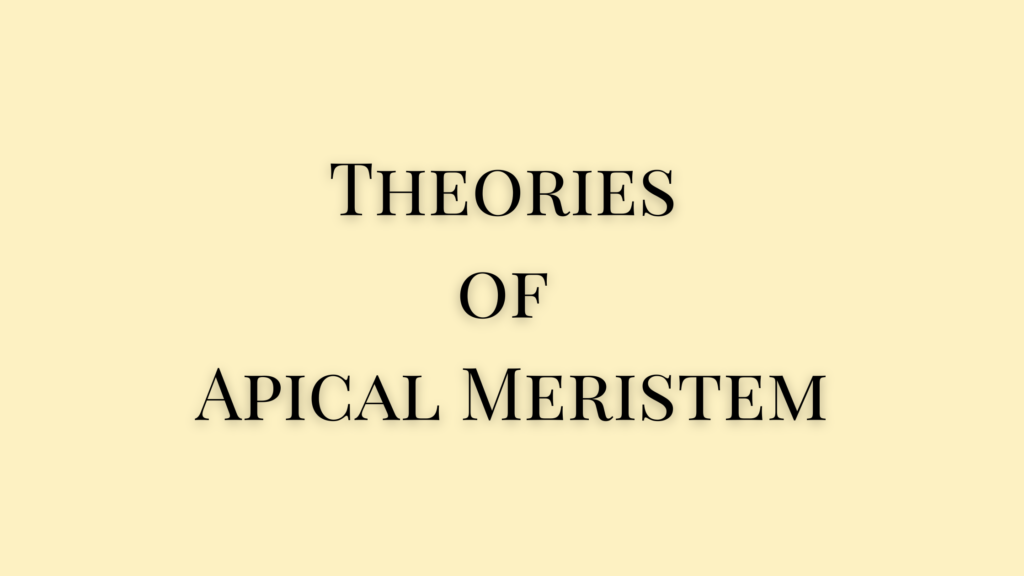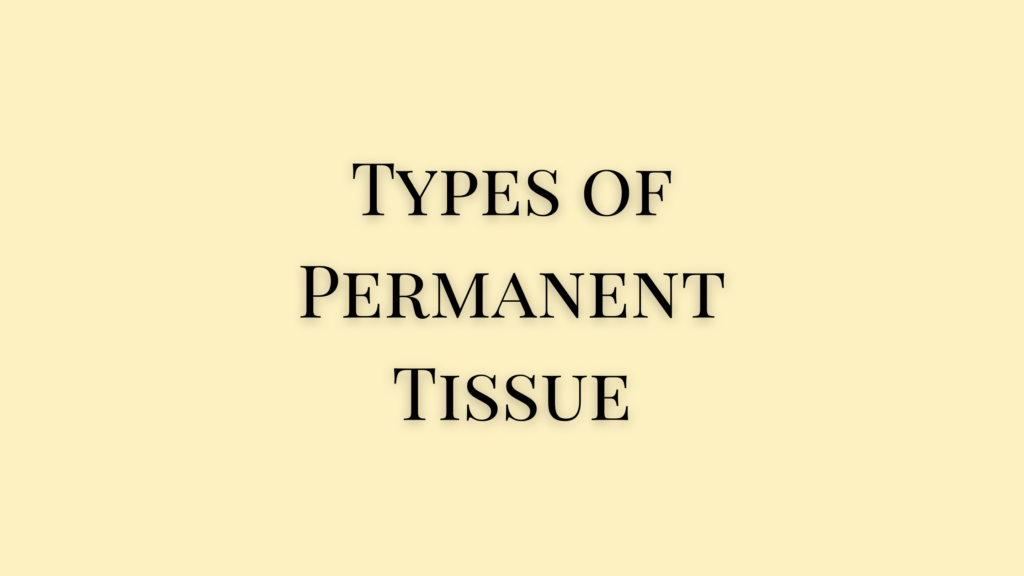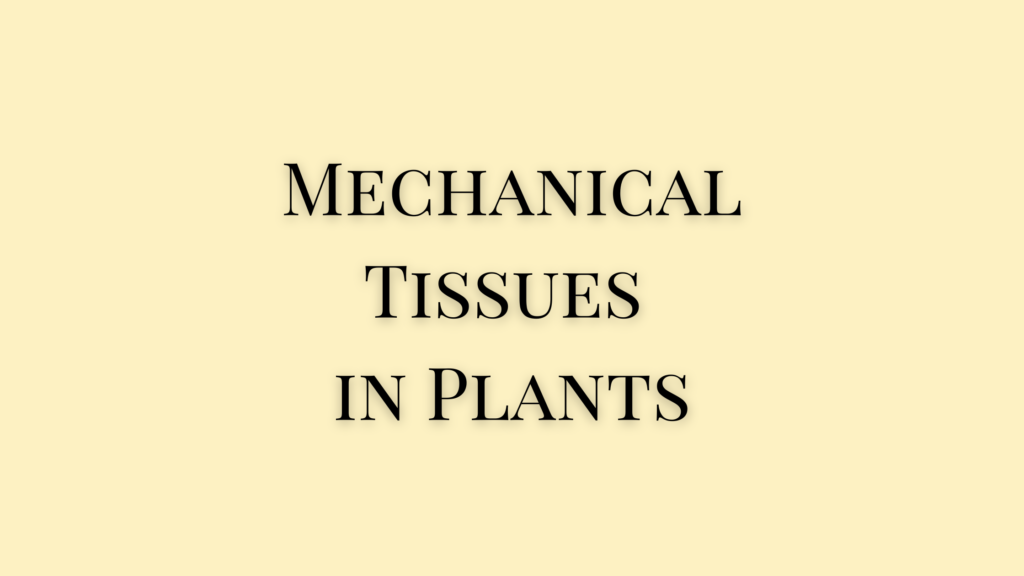The epidermal tissue system in plants consists of the epidermis, stomata, and different types of epidermal outgrowths. Most plants may also have an additional cuticular layer on the outer surface of the epidermis. Together these form the outermost layer of the shoots, roots, and leaves of plants.
Origin of Epidermal Tissues
As per the histogen theory of the apical meristem, the initial epidermal cell originated from the dermatogen of the apical meristem. In the meristematic region, these cells remain undifferentiated and as the plant grows, these initial epidermal cells divide vertically to form a single layer of cells.
Epidermis of Shoot System
- The epidermis of the shoot system is directly developed from the protoderm.
- It consists of tubular parenchyma cells in varying sizes.
- It is usually single-layered but plants belonging to Moraceae, Piperaceae, etc, have multilayered epidermis.
- A waxy coating of cuticles on the outer walls protects the epidermal cells.
- Some epidermal cells may also have some outgrowths.
Epidermis of Root System
- Epidermis of the root system is also called rhizodermis, epiblema, or piliferous layer.
- Origin of the monocot epidermis is from a tier of meristematic cells, at the tip of the roots.
- In dicots, it develops from the tier of cells at the apex. Either way, the outermost layer forms the epidermis.
- Rhizodermis does not have a cuticle layer or stomata. Instead, they develop root hairs as an extension of the outer walls.
- Root hairs are developed only from the specialized epidermal cells called trichoblasts.
- Root hair helps with the absorption of water and minerals.
Epidermal Tissue System in Plants
The epidermis is a single layer of cells that protect the outer cover of the plant body. It is the outermost layer of all tissues of the shoot, leaf, and root systems. In some plants, it may be double-layered or multi-layered as well.
The epidermis serves as a supportive layer for the plants until its secondary growth. During the secondary growth, it may be replaced by a periderm. In plants that do not develop a periderm, the epidermis stays intact.
The epidermal tissue comprises the outer barrel-shaped epidermal cells, stomata, and epidermal growths.
Characteristics of Epidermal Cells in Plants
Cells of the epidermis have the following characteristics.
- The epidermal cells are irregular in their shape and size.
- These cells are compactly arranged without any intercellular spaces.
- The epidermal walls are thickened unevenly with the inner and radial walls being thicker due to cutin or suberin deposition that protects the cells from mechanical injuries and prevents excessive water loss.
- Epidermal cells have a larger central vacuole and a thin cytoplasm that lies towards the periphery.
- The cytoplasm may have chromoplasts, leucoplasts, and anthocyanins.
- Epidermal cells lack chlorophylla, except in aquatic plants such as Hydrilla, and shade-loving plants.
- Sometimes, epidermal cells contain tannins, calcium carbonate crystals, mucilage, etc.
- Epidermal cells synthesize cuticle layers from lipids, hydrocarbon polymers, and wax.
- The cuticle is impermeable to water and thus prevents water loss.
- In addition, the cuticle serves as a barrier against contamination of any kind.
- The epidermal layer of the shoot and leaves may also contain stomata that enable gaseous exchange.
Function of Epidermis
- The epidermis forms a cover that protects the soft internal tissues from mechanical injuries.
- Prevents water loss from the internal tissues but has the cuticular layer, root hairs, etc.
- In some plants, the epidermis serves as the site of photosynthesis.
- Some plants have their epidermal cells exuding secretions.
- In xerophytic plants, the epidermis serves as a storage for water.
- Bulliform cells in mature leaves cause the rolling of leaves under unfavorable conditions to protect themselves.
Parts of Stomata
- Stomata are tiny pores on the epidermal layer that serve for gaseous exchange in plants to help with photosynthesis.
- Each stoma or pore is guarded by two bean-shaped or kidney-shaped epidermal cells called guard cells.
- The guard cells contain chloroplast and have a larger portion of protoplasm than in other epidermal cells.
- In addition, guard cells also contain starch grains. The epidermal cells that surround the guard cells are called subsidiary cells.
- In dicot leaves, stomata are scattered but in the leaves of monocots, stomata are parallelly arranged in rows.
- There could be thousands to hundreds of thousands of stomata on a leaf surface.
- Moreover, stomata are present on both the upper and lower surfaces of the leaves.
- Stomata mainly remain open during the day and are closed at night.
- The opening and closing of the stomata are controlled by the guard cells.
Types of Stomata
On the whole, there are five types of stomata. Of these four types belong to dicot plants and the fifth one to monocots. This classification of stomata is based on the structure of the guard cells and subsidiary cells.
- Anomocytic stomata or Ranunculaceous type have subsidiary cells that are similar to other epidermal cells. There would also be five subsidiary cells around the guard cells.
- Anisocytic stomata or Cruciferous type has three subsidiary cells. One of these subsidiary cells will be much smaller than the other two.
- Paracytic or Rubiaceous type of stomata has two subsidiary cells parallel to the axis of the stomatal pore and guard cells.
- Diacytic stomata or Caryophyllaceous type of stomata has a pair of subsidiary cells that have their common wall at right angles to the guard cells.
- The fifth one, the Graminaceous stomata belongs to the monocots. This type of stomata has guard cells that have a narrower middle portion than their ends. This gives them a dumbbell shape. Such stomata are seen in Cyperaceae and Gramineae.
Epidermal Outgrowths
- In most plants, some of the epidermal cells extend outwards to form epidermal hairs or trichomes.
- These outgrowths in the root epidermis are called root hairs.
- They are mere extensions of the cell itself.
- Trichomes are of different types based on their structure.
- They may be unicellular or multicellular, branched or unbranched, and glandular or non-glandular.
- Some of them may even be dead as they lose their protoplasm.
- The multicellular trichomes may be in single rows or sometimes in multiple rows.
- The presence of trichomes reduces the transpiration rate and harmful effects of sunlight.
- Some trichomes are a protective barrier against predators and injurious agents.
References
- https://www.jsscacs.edu.in/sites/default/files/Department%20Files/epidermis.pdf
- Sukumaran O R. Pre-Degree Botany. Murali Publications.
- Abraham P C. Anatomy, Embryology & Microtechnique. 1999. St. Mary’s Books & Publications.
